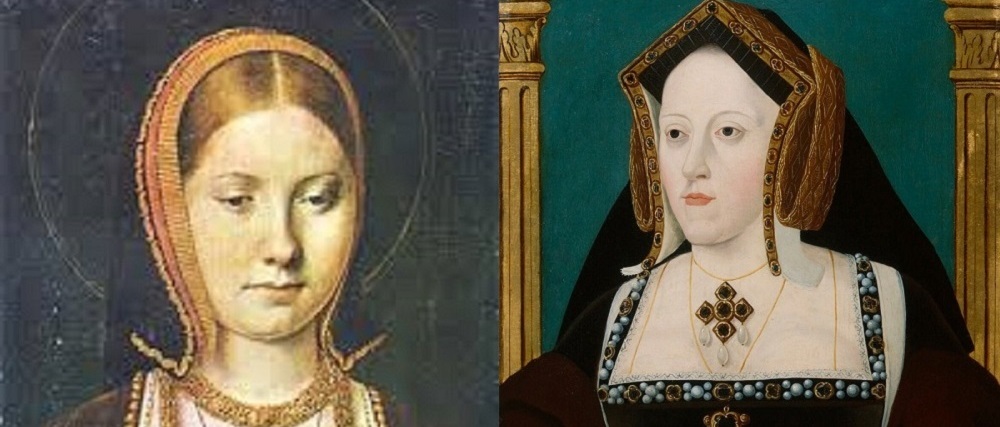Catherine of Aragon
Posted on 20th January 2021
Catherine of Aragon was born on 16 December 1485 at The Archbishops Palace in Alcala de Henares near Madrid. She was the youngest surviving child of Isabella I of Castile and King Ferdinand II of Aragon.
She had a very religious upbringing and was known to be a stern woman with a stubborn streak. She was however believed to enjoy hunting, dancing and music amongst other things and these gave her a great deal of pleasure.
Catherine had been betrothed to Henrys older brother when she was only three years old and at age fifteen, she married Arthur, Prince of Wales, on 14 November 1501 only ten days after meeting him.
It is believed, not being able to speak each-others language, Catherine and Arthur were unable to understand each other due to being taught different pronunciations of Latin.
The marriage was not to last long. While residing at Castle Lodge in Ludlow, Arthur became ill and died on 2 April 1502; the couple had only been married for five months.
After the death of Arthur, Henry VII did not want to return Catherine’s dowry to her father. He therefore agreed after much haggling that she would marry his son Henry, Duke of York when he became of age, and fourteen months after the death of Arthur, Catherine and Henry were betrothed.
During this time, Catherine had lived as a virtual prisoner at Durham House in London.
For Catherine to marry Henry, the Pope had to grant a dispensation (special permission) as under canon law a man was forbidden from marrying his brother’s widow. Catherine testified that her marriage to Arthur had not been consummated and under the same law a marriage was not valid if not consummated, therefore the marriage could go ahead.
Catherine married Henry on 11 June 1509, seven years after the death of Arthur. Henry VIII had recently acceded to the throne and was just short of his eighteenth birthday, Catherine was twenty-three.
They married in a private ceremony at Greenwich Church and shortly after the wedding on 24 June 1509, Catherine was crowned Queen of England in a joint coronation ceremony with her husband.
Henry was said to have a great deal of affection for Catherine during the early years of their marriage and they were believed to be happy. She became pregnant six times to Henry but only one child survived - a daughter, Mary.
Catherine was to lose three sons and two daughters mostly stillborn. Their son Henry, Duke of Cornwall who did survive amid much celebration died just fifty-two days later.
Catherine was to wield much influence during the early years of Henrys reign and in domestic matters regarding their marriage she was to prove herself a resilient and resourceful woman, but her failure to produce a male heir caused the marriage to sour.
Henry believed that his marriage was cursed and that he should never have married his brother’s widow.
In 1525 Henry became infatuated with Anne Boleyn, a lady-in-waiting to the Queen. Due to this infatuation, he wished to have his marriage to Catherine annulled.
Pope Clement VII refused to annul the marriage as Catherine swore that her marriage to Arthur had never been consummated. Henry continued to petition the Pope, but he would not assent to his demands.
The only way for Henry to declare his marriage invalid was to break with the Catholic Church and make himself supreme head of the Church in England.
After eight years of legal wrangles and religious squabbling finally in 1533 the marriage was declared invalid by Thomas Cranmer, Archbishop of Canterbury.
Catherine was to live the rest of her life as the Dowager Princess of Wales, a title she refused to acknowledge right through to her death.
She spent her later years at Kimbolton Castle in Cambridgeshire, where she died on 7 January 1536. She is buried at Peterborough Cathedral.
Tagged as: Junior Tudors
Share this post:





